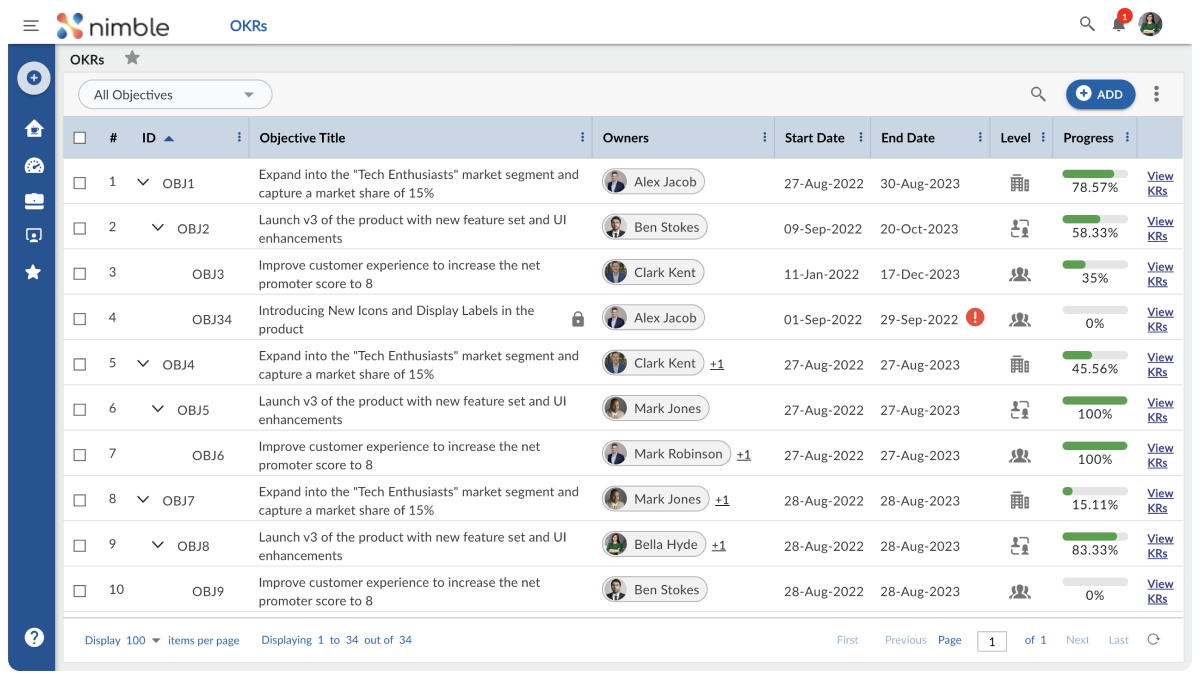Imagine embarking on a journey without a destination in mind. Every turn could be a possibility, but reaching a specific goal becomes a challenge. Project management is very much the same. According to a PMI survey, a staggering 73% of projects fail to meet their goals due to poor or unclear objectives. This article will equip you with the knowledge and tools to navigate your projects effectively, ensuring they deliver the desired outcomes.

1. Have Clear Objectives
Clearly defined objectives act as the guiding star for your project. They provide a shared understanding of what success looks like for everyone involved, from team members to stakeholders. Here’s why having well-defined objectives is crucial:
☑ Direction and Focus: Objectives set the project’s course. A study by Gartner found that projects with clearly defined objectives are 30% more likely to be completed on time and within budget.
☑ Decision-Making: When challenges arise, clear objectives provide a framework for making informed decisions. By evaluating options against the project’s goals, teams can choose the path that leads to success.
☑ Evaluation and Measurement: Objectives establish a baseline for measuring progress. By tracking key metrics aligned with your goals, you can assess performance and identify areas for improvement.
Setting the Course with OKRs
Objectives and Key Results (OKRs) offer a powerful framework for translating high-level goals into measurable outcomes. Objectives define what you want to achieve, while Key Results track your progress towards those objectives. Linking your project objectives to organizational OKRs ensures your efforts contribute to the bigger picture.
For instance, an objective for a marketing campaign could be “Increase brand awareness by 20%.” The corresponding Key Results might involve achieving a specific number of social media followers (e.g., 10,000 new followers) or website visits (e.g., 20% increase in website traffic) within a set timeframe. Tools like Nimble’s OKR can help you define, track, and communicate your project OKRs seamlessly.
2. Effective Communication
Effective communication is the lifeblood of any successful project. A PWC report found that poor communication is a leading cause of project failure, contributing to 73% of project issues. Here are some strategies to maintain clear communication:
☑ Regular Team Meetings: Establish a consistent meeting schedule to discuss progress, address roadblocks, and brainstorm solutions.
☑ Transparent Communication: Keep stakeholders informed of project updates, potential challenges, and any necessary adjustments. Utilize tools like project dashboards or status reports to maintain transparency.
☑ Collaboration Tools: Leverage platforms like Nimble’s collaboration feature to facilitate real-time communication, document sharing, and task discussions.
3. Managing Project Scope
Project scope defines the boundaries of your project, including deliverables, features, and timelines. Clearly defining and controlling scope is essential for staying on track and avoiding project creep – uncontrolled growth in features or functionality. A study by Standish Group revealed that a whopping 52% of IT projects experience scope creep, leading to delays, budget overruns, and decreased quality.
Effective scope management involves techniques like creating a work breakdown structure (WBS) to break down the project into manageable tasks. Additionally, setting realistic expectations with stakeholders and having a clear change management process can help navigate any necessary scope adjustments. Nimble’s work management and scope tracking features allow you to visualize the project scope, monitor progress, and identify potential deviations early on.
4. Time Management and Scheduling
Time management is a critical skill for project managers. By effectively managing time, you can ensure tasks are completed on schedule and resources are utilized efficiently. Here are key aspects to consider:
☑ Realistic Scheduling: Always factor in buffer time for unexpected challenges when creating project schedules. Utilize tools like Gantt charts within Nimble to visualize your project timeline and identify potential resource conflicts.
☑ Prioritization: Not all tasks are created equal. A Harvard Business Review study suggests that effective prioritization can increase team productivity by up to 25%. Learn to prioritize critical tasks that directly impact project objectives. Features like Board view, List View, Timeline View and Dependency View in Nimble can be a valuable asset in this regard.
☑ Workload Balancing: Distribute tasks evenly among team members to prevent burnout and ensure everyone is contributing effectively.
5. Resource Allocation: Getting the Right People on the Job
Successful project execution requires allocating the right resources at the right time. This includes identifying the necessary skills, expertise, and tools. Here’s how to ensure optimal resource allocation:
☑ Resource Planning: Identify the skills and experience required for each project task.
☑ Team Building: Assemble a team with the necessary expertise to accomplish project goals.
☑ Resource Management: Effectively track resource utilization to identify any bottlenecks or underutilized capacity. Nimble’s resource management capabilities can help you visualize resource allocation and make informed decisions about workload distribution.
6. Risk Management: Anticipate and Mitigate Challenges
No project exists in a vacuum. Unexpected challenges are inevitable. Proactive risk management involves anticipating potential risks, developing mitigation strategies, and having a plan in place to address them.
☑ Risk Identification: Brainstorm potential risks that could impact your project, including budget overruns, resource limitations, or technical difficulties.
☑ Mitigation Strategies: Develop contingency plans to minimize the impact of identified risks.
☑ Continuous Monitoring and Management: Regularly monitor the project landscape for any emerging risks and adapt your mitigation strategies as needed. Nimble’s risk management tools can assist you in identifying, prioritizing, and tracking potential risks throughout the project lifecycle.
7. Quality Management
Delivering high-quality work is paramount to project success. Quality management involves implementing processes to ensure your project deliverables meet the required standards. Here’s how to achieve this:
☑ Quality Assurance: Establish clear quality standards and implement processes like code reviews or design audits to identify and address any issues early on.
☑ Continuous Improvement: Always strive for improvement. Regularly evaluate your quality management processes and make adjustments as needed.
☑ Quality Tracking and Reporting: Utilize features that support quality management in Nimble to monitor and report on essential metrics and enhance processes throughout the project.
8. Stakeholder Engagement
Stakeholders are individuals or groups with a vested interest in the project’s outcome. Engaging stakeholders effectively fosters buy-in, ensures alignment with project goals, and facilitates smooth project execution. Here are some key aspects:
☑ Stakeholder Identification: Identify all stakeholders who could be impacted by the project, both internal and external.
☑ Managing Expectations: Communicate project goals, timelines, and potential challenges transparently with stakeholders to manage their expectations.
☑ Building Relationships: Regularly communicate with stakeholders, address their concerns, and keep them informed of progress. Nimble’s “Humanize Work” philosophy-based features can help you streamline communication and maintain strong relationships with all stakeholders involved.
9. Delivering Value and Benefits
The ultimate goal of any project is to deliver value and realize the benefits envisioned. Here’s how to ensure your project focuses on value:
☑ Value-Driven Approach: Throughout the project lifecycle, make decisions that maximize the project’s overall value proposition.
☑ Benefits Realization: Measure project success based on achieving the anticipated benefits, not just completing tasks or adhering to timelines.
☑ Alignment with OKRs: Ensure your project goals are aligned with organizational OKRs to guarantee your efforts contribute to the bigger picture. Nimble’s OKR features allow you to track project progress against organizational goals, promoting a value-driven approach.
Conclusion
Empower your projects for success with Nimble! Take advantage of a free trial to experience the power of Nimble’s comprehensive project management tools firsthand. Explore Nimble’s vast library of webinars and case studies to discover how others leverage Nimble to achieve exceptional results. Align your project goals with your organization’s strategic objectives seamlessly using Nimble’s OKR features. Take control of your projects, ensure successful delivery, and achieve outstanding outcomes with Nimble by your side!
















